Devastating Effects of Deforestation on Our Environment
- August 6, 2024
- 0 comment
Deforestation, the large-scale removal of forests, has devastating effects on ecosystems, biodiversity, and the global climate. This environmental degradation disrupts critical ecological functions, including carbon storage, water cycle regulation, and soil preservation. The negative impact of deforestation also contributes to climate change and the loss of biodiversity, putting countless species at risk of extinction. Understanding the causes and effects of deforestation is crucial to addressing this pressing issue and promoting sustainable forest management practices.
What Is Deforestation?
Deforestation is the large-scale clearing of forests, often for farming, logging, or urban development. This process permanently destroys forests and drastically changes landscapes, reducing habitats for countless species. While natural events like wildfires can cause some deforestation, human activities are the primary driver, especially in tropical regions known for their rich biodiversity.
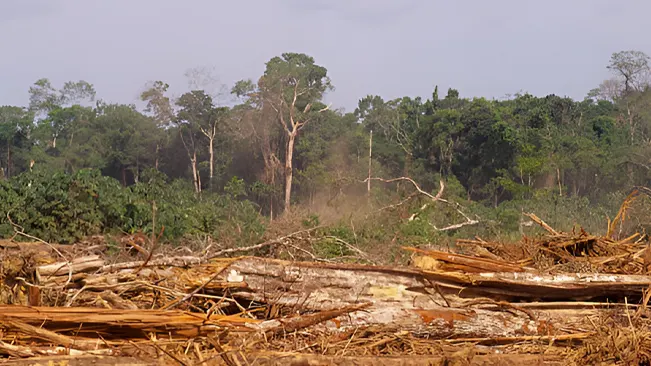
The devastating effects of deforestation go beyond just cutting down trees. It disrupts ecosystems, leads to habitat loss, and reduces biodiversity. Deforestation also harms soil fertility, disrupts water cycles, and contributes to climate change by releasing stored carbon dioxide into the atmosphere. Forests are vital for absorbing carbon and regulating the planet’s climate, so their destruction accelerates global warming and environmental degradation. Addressing the causes and effects of deforestation is crucial, requiring sustainable land-use practices and better forest management to protect these vital ecosystems.
What are the Effects Of Deforestation?
Deforestation has far-reaching environmental, ecological, and social effects that impact the planet. Environmentally, it causes soil erosion as tree roots that anchor the soil are removed, leading to sediment entering rivers and lakes, which harms water quality and aquatic ecosystems. Forests also act as carbon sinks, storing vast amounts of carbon dioxide. When destroyed, this carbon is released, significantly contributing to global warming and climate change.
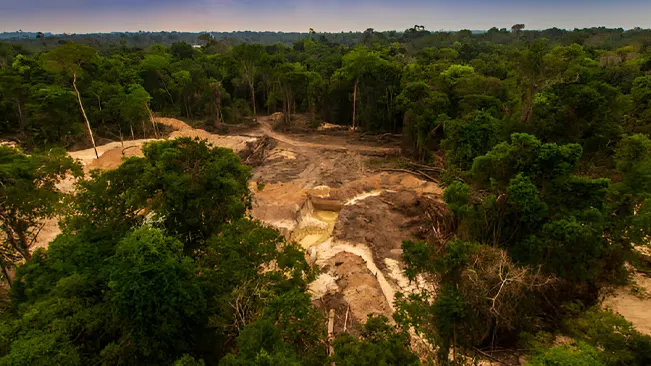
Ecologically, the loss of forests results in habitat destruction, pushing countless species toward extinction and reducing biodiversity. This loss disrupts essential ecosystem services like pollination and seed dispersal, which are critical for agriculture. Socially, deforestation devastates indigenous and local communities who rely on forests for food, medicine, and fuel. It also severs cultural and spiritual connections to the land, creating economic instability and social challenges. These devastating effects of deforestation highlight the urgent need for sustainable land use and forest conservation.
What are the Main Causes of Deforestation?
Agricultural Expansion
The growing global population drives an ever-increasing demand for food, making agricultural expansion one of the primary causes of deforestation. Each year, vast forested areas are cleared to create farmland and pastures for livestock, particularly in developing countries where agriculture heavily relies on land conversion.
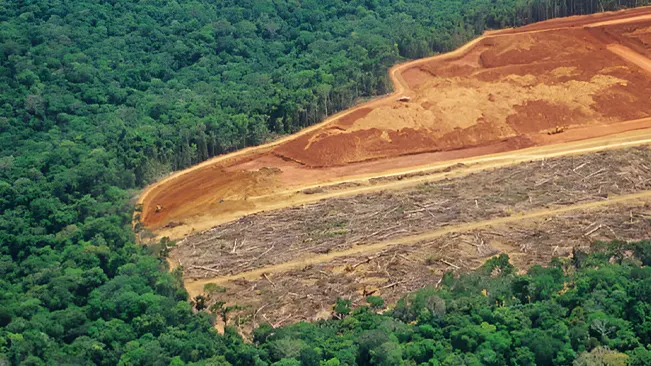
In many regions, shifting cultivation and slash-and-burn farming are still common practices. Farmers cut and burn forests to create nutrient-rich soil for crops, but this fertility is short-lived. As the land becomes unproductive, more forests are cleared, creating a destructive cycle of deforestation. This practice not only leads to the loss of biodiversity but also contributes to soil erosion, climate change, and environmental degradation. Addressing this issue requires sustainable farming methods that balance food production with forest conservation.
Logging Operations
Commercial logging operations, which harvest trees for timber and paper products, are a significant cause of deforestation worldwide. While selective logging is often promoted as a less destructive practice, it can still result in severe ecological damage when combined with illegal logging and inadequate forest management. Logged forests face increased vulnerability to wildfires and often struggle to regenerate naturally, leading to long-term environmental degradation.

The effects of deforestation from logging extend beyond the removal of trees. The absence of mature trees disrupts ecosystems, destroys wildlife habitats, and reduces biodiversity. This loss of biodiversity further weakens ecosystem resilience, impacting essential services like pollination and soil stability. Sustainable logging practices and strict enforcement of forest management laws are essential to mitigate the devastating effects of deforestation caused by logging.
Urban Expansion and Infrastructure Development
Urbanization is a major driver of deforestation, as forests are cleared to make way for cities, roads, and infrastructure. This trend is particularly evident in rapidly developing nations where urban sprawl encroaches on previously forested areas.
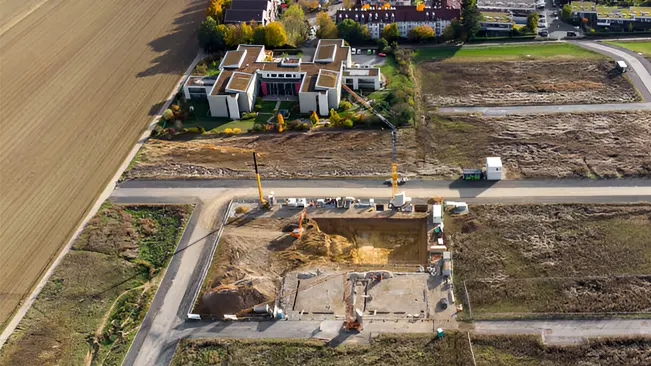
The construction of residential and commercial spaces results in permanent forest loss, while large-scale infrastructure projects like highways, dams, and railroads fragment habitats and degrade ecosystems. These developments disrupt wildlife corridors, reduce biodiversity, and contribute to environmental degradation. The impact of deforestation from urban expansion underscores the need for sustainable planning to balance development with environmental conservation.
Mining
Mining is a significant cause of deforestation, as extracting minerals like coal, gold, and other resources requires extensive land clearing. This process involves removing vegetation and topsoil, leaving the landscape stripped and barren. The infrastructure required for mining operations, such as roads, railways, and processing facilities, further accelerates forest loss and habitat destruction.
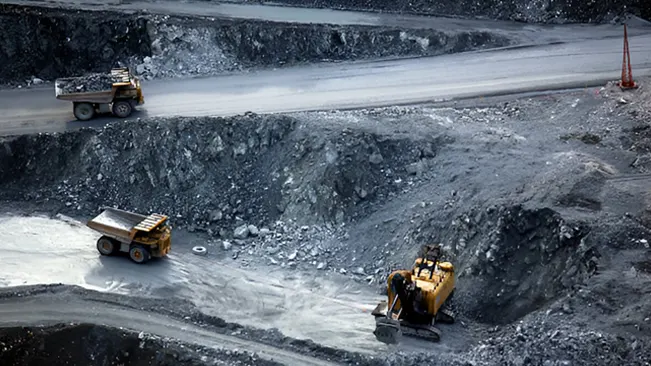
The environmental impact of mining extends beyond deforestation. It disrupts ecosystems, pollutes soil and water, and fragments habitats, leading to the loss of biodiversity. These devastating effects of deforestation from mining highlight the need for stricter regulations and sustainable practices to minimize ecological damage while meeting resource demands.
Fire
Fires, whether natural or human-induced, are a significant driver of deforestation. In agricultural areas, fire is often used as a quick method to clear land for farming. However, these fires frequently spread beyond their intended boundaries, devastating adjacent forests and causing extensive environmental damage.
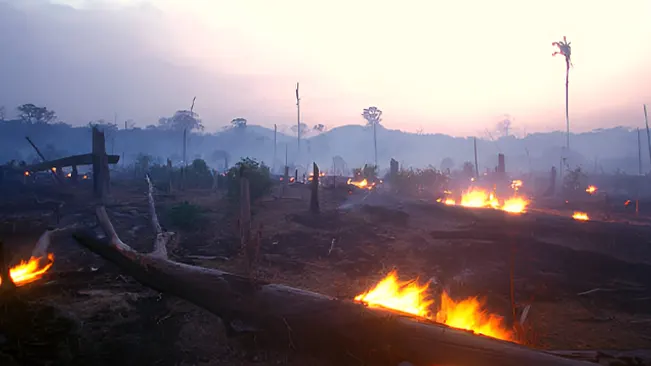
While natural wildfires can contribute to forest renewal, the increased frequency and intensity of human-induced fires exacerbate deforestation’s negative impact. These fires result in the loss of biodiversity, significant landscape alterations, and higher carbon emissions, which contribute to climate change and global warming. Addressing the causes and effects of deforestation through better fire management practices is essential to reducing these devastating effects.
What are the Environmental Impacts of Deforestation?
Climate Change
Forests play a critical role in combating climate change by absorbing carbon dioxide from the atmosphere. However, deforestation releases this stored carbon, intensifying the greenhouse effect and accelerating global warming. When deforested land is converted to agricultural use, particularly for cattle farming, the problem worsens. Cattle farming produces methane, a greenhouse gas far more potent than carbon dioxide, creating a feedback loop that further disrupts our climate system.
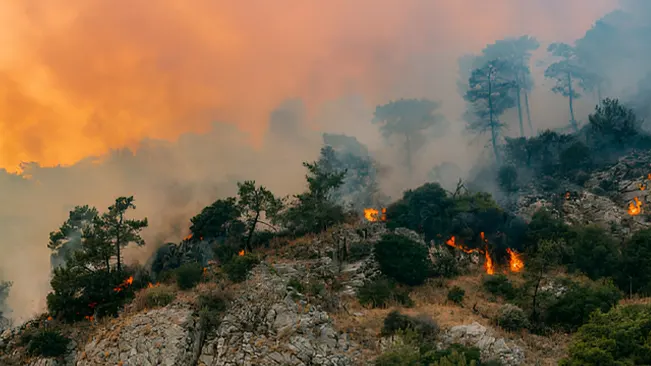
The loss of forests also reduces the planet’s capacity to absorb future carbon emissions, undermining global efforts to manage climate change. This combination of deforestation, greenhouse gas emissions, and habitat loss highlights the urgent need for sustainable land use practices to address the devastating effects of deforestation on the environment and the climate.
Conflicts Between Humans and Wildlife
Deforestation destroys natural habitats, forcing wildlife to move closer to human populations and leading to increased conflicts. Displaced animals often invade human settlements in search of food and shelter, causing property damage, livestock loss, and even human injuries. In response, humans may kill or relocate these animals to protect their homes or farmlands, further endangering already vulnerable species.

These conflicts are a clear symptom of the devastating effects of deforestation and highlight the unsustainable nature of human encroachment into wildlife territories. Habitat loss not only threatens biodiversity but also disrupts delicate ecological balances, with consequences that can impact human health and safety. Addressing these challenges requires sustainable land-use practices, effective conservation efforts, and strategies to preserve both wildlife and community safety.
Soil Erosion and Flooding
Trees play a crucial role in stabilizing soil and regulating water cycles. Their roots anchor the soil, preventing erosion, while their canopies slow rainfall, reducing its impact on the ground. When forests are removed, soils become vulnerable to erosion, losing fertility and the ability to support plant life. This degradation leads to increased runoff and sedimentation in rivers, raising the risk of severe flooding.
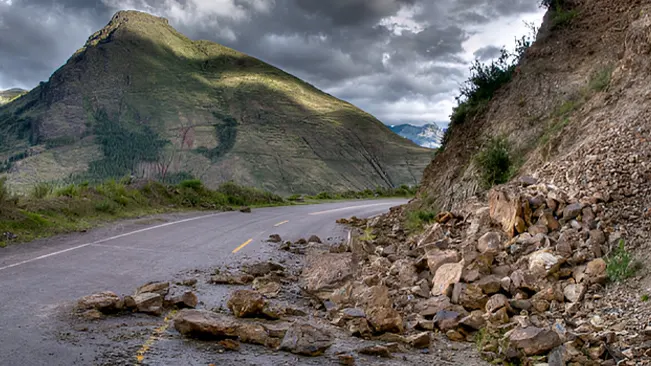
The devastating effects of deforestation are evident in countries like Costa Rica and Madagascar, where large amounts of topsoil are lost annually. This soil loss often forces reliance on chemical fertilizers, which can lead to water pollution, algal blooms, and aquatic dead zones. These cascading environmental issues highlight the urgent need for sustainable land management practices to protect soil integrity, reduce flooding, and mitigate further environmental degradation.
Tropical Diseases
Deforestation significantly raises the risk of tropical diseases by breaking down natural ecological barriers between humans and disease vectors. Clearing forests destroys habitats for countless species, creating pathways for pathogens to spread to humans and livestock. According to the Intergovernmental Science-Policy Platform on Biodiversity and Ecosystem Services, these disruptions increase the likelihood of pathogens spilling over from wildlife, heightening the risk of outbreaks.

The movement of humans into previously forested areas increases contact with vectors that carry diseases such as malaria, dengue fever, and Zika virus, among others. Moreover, the changes in landscape and climate brought about by deforestation may alter the distribution of these disease vectors, potentially expanding the geographical range of diseases. This scenario underscores the importance of maintaining intact ecosystems as a natural form of disease regulation and highlights the health risks associated with habitat destruction.
What can Be Done to Reduce Deforestation?
Reducing deforestation requires a multifaceted approach involving policy changes, community engagement, and sustainable practices. Governments play a key role by enforcing strict laws to protect forests, establishing protected areas, and regulating industries like agriculture and logging. International cooperation is also crucial, with initiatives such as payments for ecosystem services providing economic incentives to preserve forests and combat the devastating effects of deforestation.
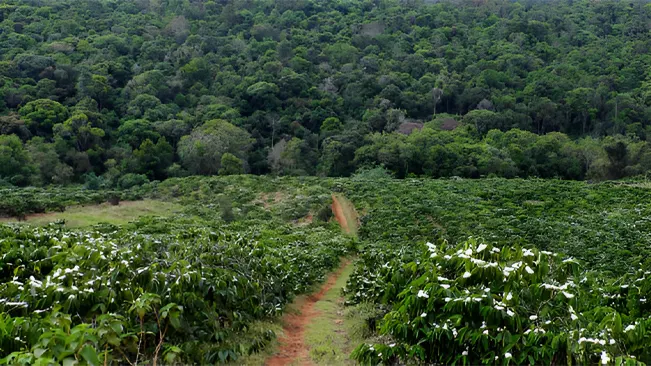
Community involvement is equally important in these efforts. Sustainable practices like agroforestry integrate trees into agricultural lands, maintaining biodiversity and improving soil fertility. Educational programs empower local communities to participate in conservation efforts, while consumer demand for sustainably sourced products drives businesses to adopt greener practices. By combining these strategies, we can mitigate deforestation’s impact on biodiversity, climate change, and the environment, ensuring a sustainable future.
Conclusion
Deforestation poses a serious threat to the environment, biodiversity, and climate, with devastating effects that ripple across ecosystems and human societies. The loss of forests accelerates climate change, reduces biodiversity, degrades air and water quality, and disrupts the livelihoods of communities dependent on forest resources. These impacts highlight the urgent need to address the causes and effects of deforestation through stronger environmental protections, sustainable land-use practices, and international cooperation.
FAQs
- What are the primary effects of deforestation on biodiversity?
Deforestation leads to habitat loss, which is the greatest threat to species diversity. It disrupts ecological balances, causing numerous species to face extinction. - How does deforestation contribute to climate change?
By removing trees, deforestation reduces the Earth’s capacity to absorb carbon dioxide, a major greenhouse gas. Additionally, the burning of trees releases stored carbon back into the atmosphere, further exacerbating global warming. - What are some immediate consequences of deforestation on local communities?
Local communities often suffer from loss of livelihood, reduced access to resources like firewood and medicinal plants, and increased conflict with wildlife. Additionally, they may experience altered water cycles leading to water shortages. - Can reforestation counteract the effects of deforestation?
Yes, reforestation can help mitigate the effects by restoring degraded lands, enhancing carbon sequestration, and rebuilding habitats. However, it is crucial to match the tree species and ecological conditions of the original forest to ensure success. - What role do governments and international policies play in preventing deforestation?
Governments can enforce laws that protect forests, create incentives for sustainable land use, and participate in international agreements to manage forest resources responsibly. Effective policies are essential for reducing illegal logging and encouraging conservation efforts. - How does deforestation affect the water cycle?
Forests play a critical role in regulating the water cycle through processes like transpiration and rain interception. Deforestation leads to reduced rainfall and increased frequency of droughts in affected areas. - What are sustainable alternatives to deforestation-driven agriculture?
Agroforestry, sustainable farming practices, and using less land-intensive crops can provide alternatives to traditional methods that lead to deforestation. These practices help maintain ecological balance and provide economic benefits without extensive clearing of forests.

Joel Cunningham
Forestry AuthorI'm Joel Cunningham, an expert in pruning and weed management with over a decade of experience. My skills are rooted in formal training and extensive practice, focusing on advanced pruning techniques and efficient weed control. I'm known for my quality work, precision, and deep understanding of plant health and soil dynamics. My contributions extend to educational initiatives where I share sustainable practices and advice, establishing myself as a reliable and authoritative figure in the gardening community.

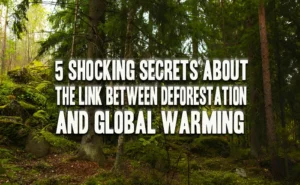
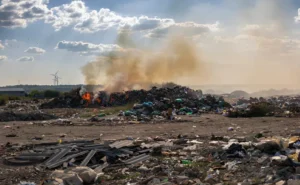
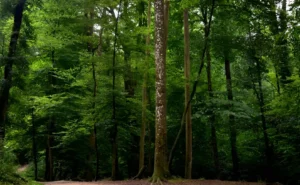

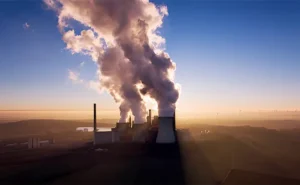
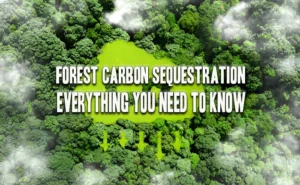
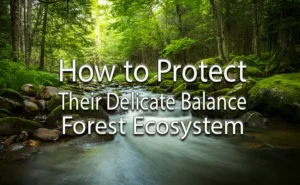



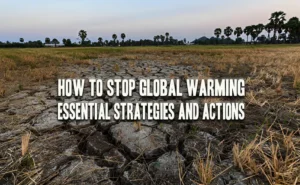

Leave your comment